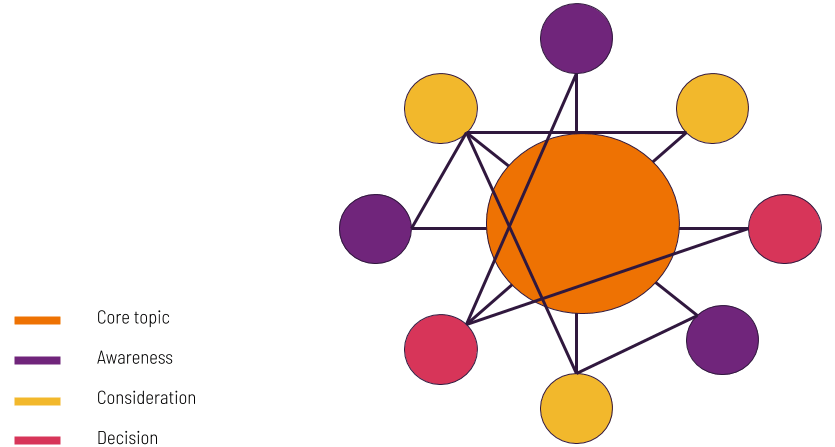Content production is usually the last stage of a content strategy process. Once you have defined the content needs of your audience, the business objectives, the right tone, and the content governance process, it’s time to start actually producing the content. The first step is to use all the information you gathered to build a content plan that can guide you through the execution of the content strategy.
In order to produce a solid content plan, you need to involve several team members and stakeholders, so you can gather input from subject matter experts, agree on the production and publishing process, clarify responsibilities, and get approval and support from key stakeholders.
The most efficient way to manage that process is through a content planning workshop.
These kind of activities are a useful hands-on way to gather all the key stakeholders together and develop a useful content plan for the quarter, semester or for the rest of the year.
Follow these steps to conduct a content planning workshop that helps your organization come up with a flexible but comprehensive plan to help you develop content that meets your user needs and accomplishes your business objectives.
Now it’s time to assign a value to each stage and estimate the number of hours it’ll take to complete each part of the process. This step of the workshop can be done through an open discussion, but make sure that the opinion of the person owning the stage can be heard as much as possible.
Make sure the estimates are both realistic and everyone agrees with the hours assigned to each stage. As a final step, calculate the total time it’d take for a piece of content to be published and maintained, from start to finish. That could help you get a feeling for the size of the project, depending on how many content items you need to create.
1. Think ahead of the content plan workshop

- leaders or managers from whom you need buy-in
- team members involved in writing and developing the content
- people involved in distributing and promoting the content
- your SEO team or specialist
- team members from marketing or branding
- subject matter experts
- people from engineering or developers.
- How many breaks and the duration
- Punctuality when coming back from any break
- No use of phones or computers to check email.
2. Build a content developing process

- Subject brief with target keywords for SEO and the reason why this blog post is necessary. What user needs and business objectives it supports
- Interview with the subject matter expert to gather the necessary input to provide a useful view of the subject
- First content draft
- Review and editing process from other content producers and the SEO team
- Second content draft
- Comments and approval from management and legal, if necessary.
- Final draft
- Publish
- Distribute
- Maintenance: after a while, the content may be in need of an update or it may need to be merged or deleted.
3. Identify who is responsible for each stage of the content plan

4. Estimate the workload for every part of the content plan

Table of Contents
Toggle4. Review the process with participants and key stakeholders










